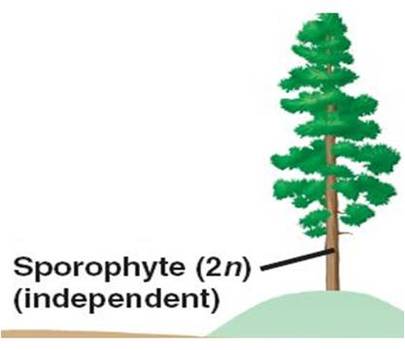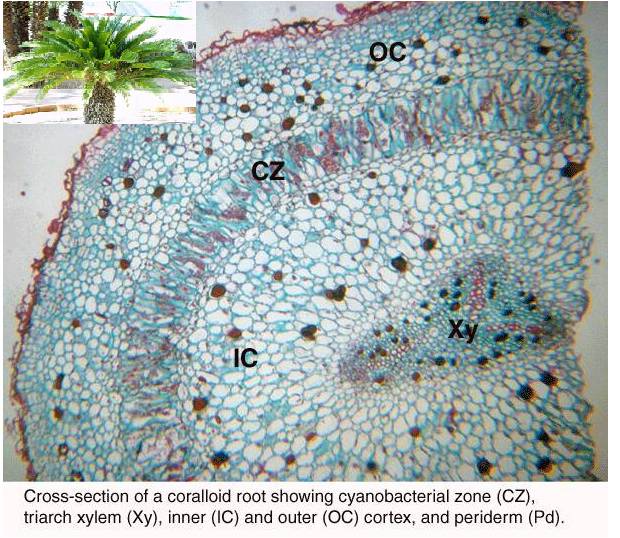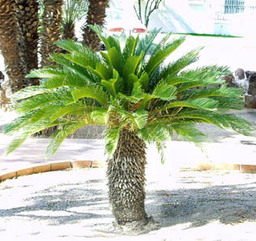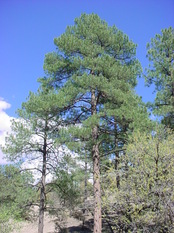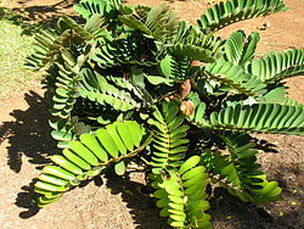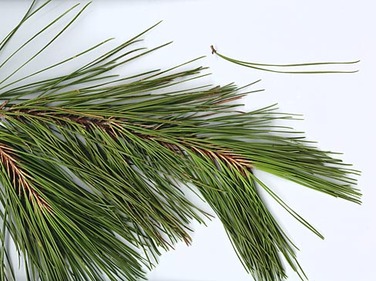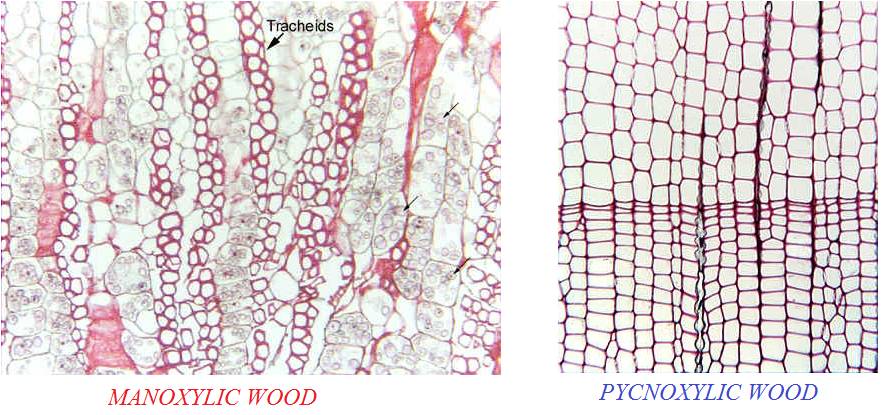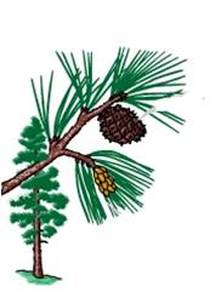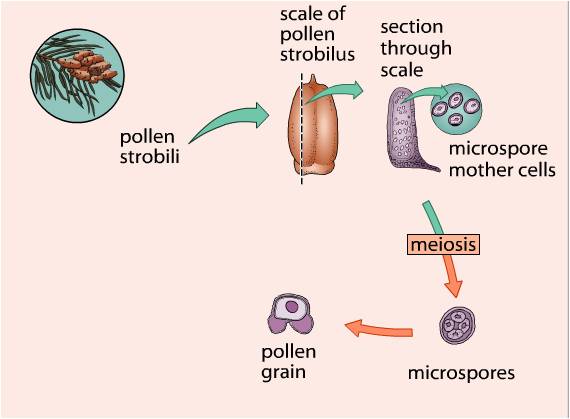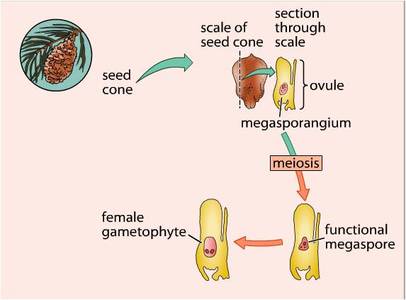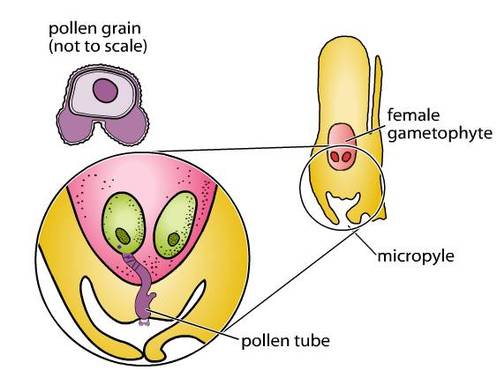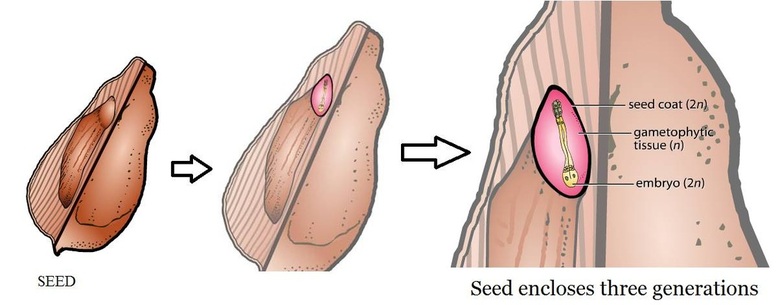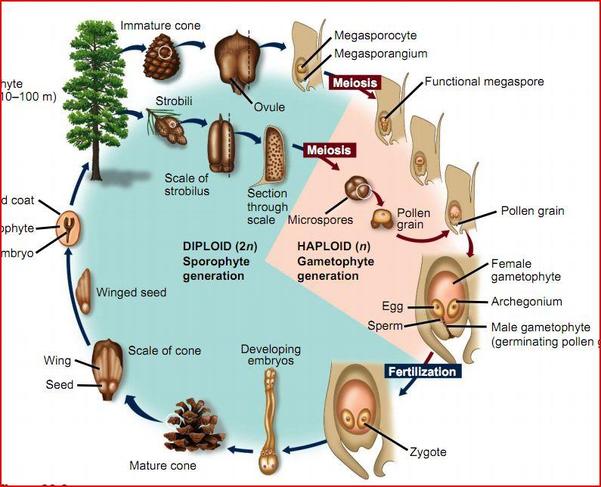ISC 11>CONTENT>2 DIVERSITY OF LIFE>3 KINGDOM-PLANTAE>GYMNOSPERMS
CLASS PRESENTATION |
ANIMATIONS |
INTRODUCTION
- The division spermatophyta (Seed plants), as the name suggests, include all seed bearing plants. It has been divided into two sub divisions- gymnosperms and angiosperms.
- Gymnosperms (Gymno: naked, sperma= seed) include simpler and primitive plants of the division spermatophyta.
- They are characterised by the presence of naked ovules, borne unprotected on the surface of the megasporophylls.
- Gymnosperms are sometimes called as phanerogams without ovary.
- Gymnosperms are most ancient group of seed plants, originated in the Paleozoic era. They were dominant over the earth's surface during the Jurassic and cretaceous period of Mesozoic era.
- There are about 70 genera and 725 species of living gymnosperms, distributed throughout the temperate and tropical regions of the world.
- In India, they occur in northern mountain ranges including the Himalayas.
- The cone bearing plants or the conifers form the largest group with 500 living species. The common conifers are species of Pine, Fir, Spruce, Cedar and Larch.
GENERAL CHARACTERISTICS
MORPHOLOGY
- Most of the living gymnosperms are evergreen trees or shrubs with xerophytic adaptation.
- The main plant body is sporophytic and is differentiated into root, stem and leaves.
- The plant possess well developed tap root system. Roots of some taxa have symbiotic relationship with blue green algae (Coralloid roots of Cycas) or fungi (e.g. mycorrhizal roots of Pinus)
- The stem is usually erect, profusely branched (Unbranched in Cycas) and woody.Sometimes, as in Zamia, it is tuberous. presence of leaf scars on the stem is a characteristic feature of gymnosperms.
- The leaves are usually dimorphic.
- The foliage leaves are green, simple, needle shaped or pinnately compound.
- Scaly leaves are usually minute and deciduous.
- The leaves are well adapted to withstand extremes of temperature, humidity and wind due to following features.
- Needle like leaves reduces surface area.
- Thick cuticle
- Sunken stomata
ANATOMICAL FEATURES
- The roots are di-to polyarch.
- In the cortex of the stem tanniniferous cells are frequently present.
- The young stem has a ring of collateral and open vascular bundles.
- The xylem consists of only tracheids and xylem parenchyma, vessels are absent, with the exception of the members of the gnetales.
- The phloem consists of sieve tubes and phloem parenchyma. Companion cells are, however absent.
- The stem shows distinct secondary growth and conspicuous annual rings are present in the wood.
- The wood may be manoxylic (in Cycas) or pycnoxylic (Pinus)
- In leaf, the mesophyll may be undifferentiated (Pinus) or differentiated into palisade and spongy parenchyma (Cycas)
- Most gymnosperms leaves do not have lateral veins and the lateral translocation of nutrients takes place with the help of transfusion tissue.
REPRODUCTION
|
|
MALE CONE (STAMINATE CONE)
|
FEMALE CONE (OVULATE CONE)
|
- The male and female gametophytes in gymnosperms do not have an independent free-living existance. This is unlike bryophytes and pteridophytes where the gametophytes have an independent free-living existance.
- The pollen are relaesed from the microsporangium and are carried with air current to the ovules.
- After fertilization, zygote develops into embryo and ovules into seeds. The seeds are naked.
THREE GENERATIONS LOCKED IN SEED
- Seed encloses three generations.
- The ovule or megasporangium belongs to parent diploid (2n) sporophyte generation.
- In the megasporangium, the functional haploid megaspore divides and forms a gametophyte(n) still within the ovule.
- Following fertilization zygote is formed which is develops into an embryo. The embryo represents the next sporophytic generation.
LIFE CYCLE OF PINUS
CLASSIFICATION
- Living gymnosperms are divided into following four groups:
- Cycadopsida: Cycas
- Coniferopsida : Pinus, Taxus, Ephedra
- Ginkgoales : Ginkgo
- Gnetopsida : Gnetum
ECONOMIC IMPORTANCE
- Edible seeds:
- Ornamental
- Timber
- Paper
- Drug
- Fibre board
- Essential oil
- Resins
DOMINANCE OF SEED PLANTS ON LAND
- Formation of seeds : Seeds are more resistant to desiccation and extremes of temperature.They provide protection to the embryo and also food for its germination.
- Formation of pollen tube : This eliminates dependence on water to bring about fertilization.
- Devices for seed and fruits dispersal :These plants have different devices for wide dispersal of seed and fruits.
- Development of vascular tissue : Xylem allows underground water absorbed by roots to be transported to the leaves and phloem ensures distribution of food manufactured by leaves to various plant parts.
- Development of cambium for secondary growth : This provides more mechanical tissues for support.
SUMMARY VIDEOS
|
|
|
